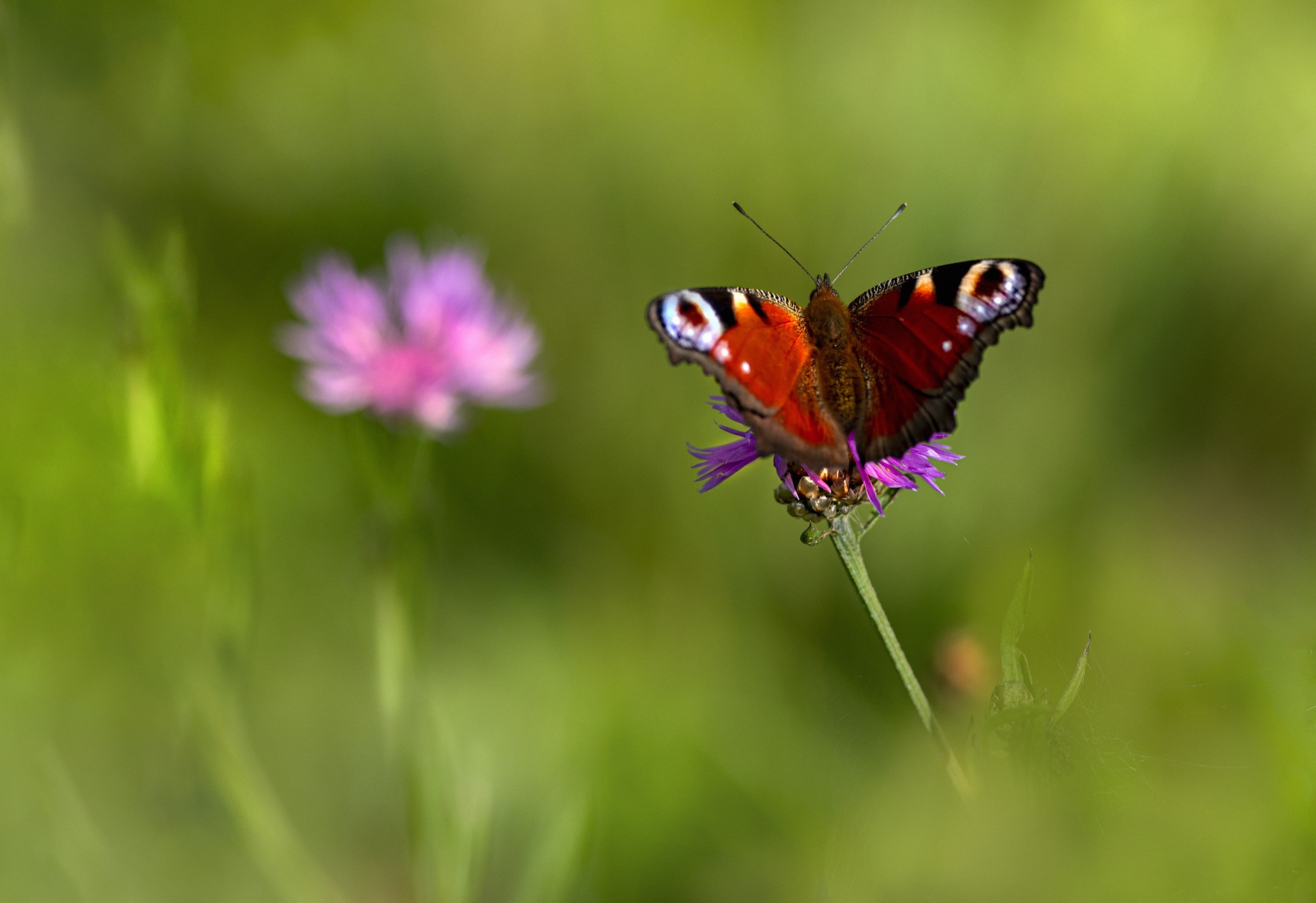Here’s a detailed natural history overview of the European Peacock (Aglais io), one of Europe’s most striking and familiar butterflies:
European Peacock (Aglais io)
Taxonomy & Classification
- Kingdom: Animalia
- Phylum: Arthropoda
- Class: Insecta
- Order: Lepidoptera
- Family: Nymphalidae (brush-footed butterflies)
- Genus: Aglais
- Species: A. io
General Description
- Wingspan: 50–55 mm on average.
- Appearance:
- Upperside: Rich reddish-brown wings with large, colorful eyespots on each wing (blue, yellow, and black), resembling a peacock’s tail feathers.
- Underside: Very dark, almost blackish-brown, providing excellent camouflage when wings are closed, resembling a dead leaf or bark.
- Sexual dimorphism: Minimal — males and females appear similar.
- Flight pattern: Graceful, gliding interspersed with rapid wingbeats.
Behavior & Lifestyle
- Defensive behavior: The eyespots serve to startle or deter predators (especially birds). When threatened, it can also flash its wings suddenly or make a hissing sound by rubbing its wings together.
- Activity: Diurnal; often basks in sunny spots with wings open.
- Hibernation: Adults hibernate over winter in hollow trees, sheds, caves, or attics, emerging in early spring.
Diet
- Caterpillars: Feed mainly on stinging nettles (Urtica dioica).
- Adults: Feed on nectar from thistles, buddleia, dandelions, and other flowering plants. They may also sip tree sap and overripe fruit.
Reproduction & Life Cycle
- Mating season: Spring, soon after adults emerge from hibernation.
- Eggs: Laid in clusters on the underside of nettle leaves.
- Larvae (caterpillars): Black with white spots and spines; live gregariously in silken webs during early stages.
- Pupae (chrysalides): Green or brown, camouflaged among vegetation.
- Adult emergence: Usually June–July, with one or sometimes two broods depending on climate.
- Lifespan: Adults can live up to 11 months due to hibernation, unusually long for a butterfly.
Habitat
- Found in a wide variety of habitats:
- Woodlands and forest edges
- Meadows and grasslands
- Gardens, parks, and urban areas
- Requires sunny spots with flowering plants for nectar and nettles for breeding.
Geographic Range
- Widespread across Europe and temperate Asia, from the UK and Iberian Peninsula through Scandinavia to Japan.
- Absent from northernmost Arctic regions and much of southern Iberia.
Ecological Role
- Pollinator: Contributes to pollination of wildflowers and garden plants.
- Prey species: Caterpillars are food for birds, wasps, and other insects, while adults may fall prey to birds, spiders, and bats.
- Nettle specialist: Relies heavily on nettle patches, linking it to this common plant in European ecosystems.
Special Adaptations
- Eyespots: Startle predators by mimicking the eyes of larger animals.
- Wing underside camouflage: Provides cryptic protection when resting with wings closed.
- Hibernation ability: One of the few butterflies in Europe that overwinters as an adult.
Conservation Status
- IUCN Red List: Not globally threatened; considered Least Concern.
- Population trend: Stable, though local declines may occur due to habitat loss, herbicide use on nettles, and climate-related shifts in hibernation survival.
- Conservation measures: Maintaining nettle patches and nectar-rich plants in both wild and urban environments supports populations.
Interesting Facts
- When disturbed in hibernation, peacocks often flash their wings and produce a rasping noise to scare off predators like mice.
- One of the first butterflies seen in spring, often flying on warm sunny days in February or March.
- Its bold appearance makes it one of the most photographed and painted butterflies in Europe.
Visited 902 times, 14 visit(s) today
Views: 1381
Subscribe to the newsletter:
